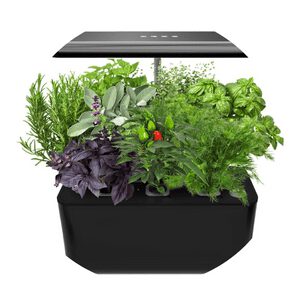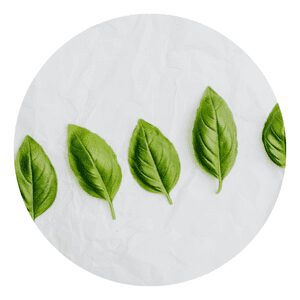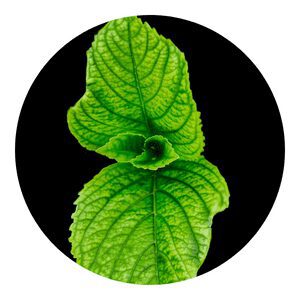How to Grow Dill Hydroponically
If you’re looking for a way to grow dill that doesn’t involve soil, hydroponics may be the answer.
Hydroponics is a method of growing plants in water without soil.
All you need is some basic equipment and knowledge of how to maintain a hydroponic system.
With a little bit of effort, you can have fresh dill year-round.
Hydroponic Dill Menu
What is dill, what are the benefits of growing dill hydroponically
Dill is an herb that has many benefits, both culinary and medicinal.
It can be grown hydroponically with ease, making it a great option for those with limited space.
Dill has a long history of use in folk medicine, and recent studies have shown that it may have some anti-cancer properties.
Dill (Anethum graveolens) is a member of the celery family.
It is an annual herb that grows to about 2 feet (60 cm) tall.
The leaves are feathery and green, and the flowers are small and yellow.
Dill is native to the Mediterranean region, but it is now cultivated in many parts of the world.
The primary use of dill is as a culinary herb. It has a mild, sweet taste that goes well with many dishes.
Supplies needed to get started
If you’re interested in growing dill hydroponically, there are a few supplies you’ll need to get started.
First, you’ll need a container to grow your dill in. This can be anything from a plastic bucket to a fish tank.
Next, you’ll need a medium for your plants to grow in.
There are many different types of media that can be used for hydroponic gardening, but coco coir is a good option for beginners.
Finally, you’ll need a nutrient solution to feed your plants.
You can make your own nutrient solution or purchase one from a garden center.
With these supplies, you’ll be ready to start growing dill hydroponically!
The best medium for dill plants
Dill is best grown hydroponically because it allows for more control over the growing environment.
By growing dill hydroponically, you can ensure that the plant gets the nutrients it needs and the right amount of water.
Additionally, you can control the temperature and humidity levels, which can be important for growing dill successfully.
I Grow dill hydroponically With just a little water and light It's easy and effortless And you'll have dill all year-round No more worrying about planting And then waiting for months Now you can have fresh dill anytime Just grow it hydroponically
Chappy The Gardener
How to plant dill seeds
If you want to learn how to grow dill hydroponically, then you’ve come to the right place.
This method of growing dill is not only easy, but it’s also very efficient.
Here’s what you need to do:
1. Get yourself a hydroponic system. There are many different types of hydroponic systems available on the market, so choose one that suits your needs and budget.
2. Fill your system with an appropriate growing medium. Perlite or coco coir are two good choices for growing dill hydroponically.
3. Sow your dill seeds in the growing medium, making sure that they are evenly spaced out.
4. Allow the seeds to germinate for 7-10 days before beginning to water them with a nutrient solution.
5. Harvest your crop once it has reached maturity, which should take about 2 months after the seeds have germinated. You can now use your dill as you would normally do.
Caring for your dill plants
When it comes to growing dill, there are a few things you need to know in order to have success.
Dill is best grown hydroponically, as this method allows for the roots to stay moist and prevents the plant from getting too much sun.
When growing dill hydroponically, you will need to use an air stone to oxygenate the water and keep the roots healthy.
You will also need to fertilize your plants every two weeks with a fish emulsion or other liquid fertilizer.
To ensure that your dill plants get enough light, place them near a south-facing window or under grow lights.
If you live in an area with hot summers, you may need to provide some shade for your plants during the midday hours.
Dill prefers cool weather and will go dormant in temperatures over 80 degrees Fahrenheit.
When and how to harvest dill
Dill can be harvested as soon as the plant has reached 6-8 inches in height.
To ensure a continuous supply of dill, make successive sowings every 2-3 weeks.
How to harvest dill:
To harvest, cut the entire plant just above ground level. Dill can be used fresh or dried.
To dry, tie plants in small bundles and hang upside down in a cool, dark, and dry place.
Tips for growing dill hydroponically successfully
Dill is a fragrant herb that is perfect for growing hydroponically.
If you are new to hydroponic gardening, here are some tips to help you successfully grow dill.
To start, it
is important to choose a high-quality growing medium.
There are many types of hydroponic media available, so be sure to do your research to find the best option for your plants.
Once you have chosen your medium, it is time to set up your system.
There are many different types of hydroponic systems, so again, be sure to do your research to find the best option for your plants.
Once you have your system set up, you will need to add nutrients to the water.
This can be done by using a nutrient solution or by adding fertilizers to the water.
Can you grow dill in water?
Yes, you can grow dill in water.
All you need is a container, some rocks or gravel, and some water.
To get started, fill your container with water and add the rocks or gravel.
Then, plant your dill seeds in the water. You will need to change the water every few days to keep the plants healthy.
Dill is a great plant to grow hydroponically because it does not need soil to thrive.
This makes it a great option for small spaces or for people who want to save on gardening costs.
Plus, growing dill in water is easy and only requires a few simple supplies.
Can you grow dill indoors all year round?
Dill is an annual herb that is usually grown outdoors.
However, with the right setup, you can grow dill indoors all year round.
To grow dill indoors, you will need a hydroponic system.
Hydroponic systems allow plants to grow without soil. Instead, plants are grown in a nutrient-rich water solution.
Hydroponic systems can be expensive to set up.
But once you have a system in place, growing dill is easy and does not require a lot of maintenance.
If you want to grow dill indoors all year round, hydroponics is the way to go. With a little bit of effort, you can enjoy fresh dill year-round.
How to Grow Dill aquaponics
Aquaponics is a type of hydroponics that uses fish waste to provide nutrients for plants.
It is a sustainable way to grow plants without the use of chemical fertilizers.
Dill is a popular herb that can be grown aquaponically.
Here are some tips on how to grow dill aquaponically:
1. Start with seeds or seedlings. Dill can be started from seed or from seedlings that have been started in an indoor growing system.
2. Choose a container. Aquaponic systems can be set up in a variety of containers, including fish tanks, barrels, and troughs. The size of the container will depend on the amount of space you have available and the number of plants you want to grow.
3. Add water and fish. The water in an aquaponic system needs to be fresh and clean.
In conclusion,growing dill hydroponically is a great way to have fresh herbs on hand year-round.
Not only is it relatively easy to do, but it is also very rewarding.
Not to mention, hydroponically grown herbs are typically more potent than those grown in soil.
So if you are looking for a new hobby that can provide you with fresh, flavorful herbs, look no further than hydroponic dill gardening.
Hydroponic FAQ
Hydroponics is a method of growing plants in a water-based solution. The roots of the plant are submerged in the solution, which provides nutrients to the plant. Hydroponics can be used to grow plants in any environment, including indoors or in areas with limited space.
Hydroponics is a great way to grow plants without using soil. Soil can contain harmful bacteria and pests that can damage plants. Hydroponics also allows for better control over the nutrient levels that plants receive. This means that plants can be grown faster and more efficiently.
Hydroponics is not only for professional growers anymore. Anyone can set up a simple hydroponic system at home with just a few supplies. All you need is a container, some water, and some nutrients for your plants. You can find all of these supplies at your local garden center or online.
Hydroponics is a method of growing plants in a water-based solution instead of soil. The roots of the plants are suspended in the solution, which is typically kept at a pH level between 5.5 and 6.5 and contains all the nutrients the plant needs to grow.
The water-based solution is circulated using a pump, and the oxygen in the water helps the roots to absorb the nutrients they need. The plants are grown in a controlled environment, which means that they can be grown year-round and don’t require as much space as traditional methods of farming.
Hydroponics is a efficient way to grow crops, and it’s often used by commercial growers to produce fruits, vegetables, and herbs.
Hydroponics is a type of gardening that uses mineral nutrient solutions, in water, without soil. Terrestrial plants may be grown with only their roots exposed to the mineral solution, or the roots may be supported by an inert medium, such as perlite or gravel. The main advantages of hydroponics over conventional farming are:
1) Hydroponics can be done on a smaller scale than traditional farming. This means that it is possible to set up a hydroponic system in your own home, without needing a lot of space.
2) Hydroponics does not require the use of chemical pesticides or herbicides. Because the plants are grown in a controlled environment, they are not subject to pests and disease in the same way that plants grown in soil are.
Hydroponics is a method of growing plants in water without soil. Although this type of gardening has many advantages, there are also some disadvantages to consider before starting a hydroponic garden.
One of the biggest disadvantages of hydroponics is the initial cost. Setting up a hydroponic system can be expensive, and it requires special equipment that may not be readily available. Additionally, hydroponic gardens require more maintenance than traditional gardens and may require additional expertise to troubleshoot problems.
Another downside to growing plants hydroponically is that they can be more susceptible to diseases and pests. Because the roots are exposed and the plants are grown in close proximity to each other, diseases can spread quickly throughout a hydroponic garden. Pests can also be difficult to control in a hydroponic system because they can easily hide among the plants.
Hydroponics is a gardening method where plants are grown in water instead of soil. The water is kept circulating and contains all the nutrients the plant needs to grow. You can set up a hydroponic system using different materials, but you will need some basic equipment to get started.
To start growing plants in a hydroponic system, you will need:
-A container to hold the plants and water. This can be anything from a plastic bucket to a fish tank.
-A way to circulate the water and deliver nutrients to the plants. This can be done with a simple pump and tubing or with a more complex aeration system.
-Grow lights if you are not growing your plants in natural sunlight.
-Plant food or nutrient solution to mix into the water.
A hydroponic system is a great way to grow plants without using soil. There are many different ways to set up a hydroponic system, but they all generally follow the same basic principles.
One of the most important things to consider when setting up a hydroponic system is the type of growing medium you will use. There are many different types of growing mediums available, and each has its own advantages and disadvantages. Some common types of growing mediums include gravel, sand, perlite, and vermiculite. Once you have decided on a type of growing medium, you will need to purchase enough to fill your chosen container.
Another important consideration when setting up a hydroponic system is the type of nutrient solution you will use. There are many different types of nutrient solutions available, and each has its own advantages and disadvantages.
Click To Grow
Helps Us Grow – Share If You Like


















